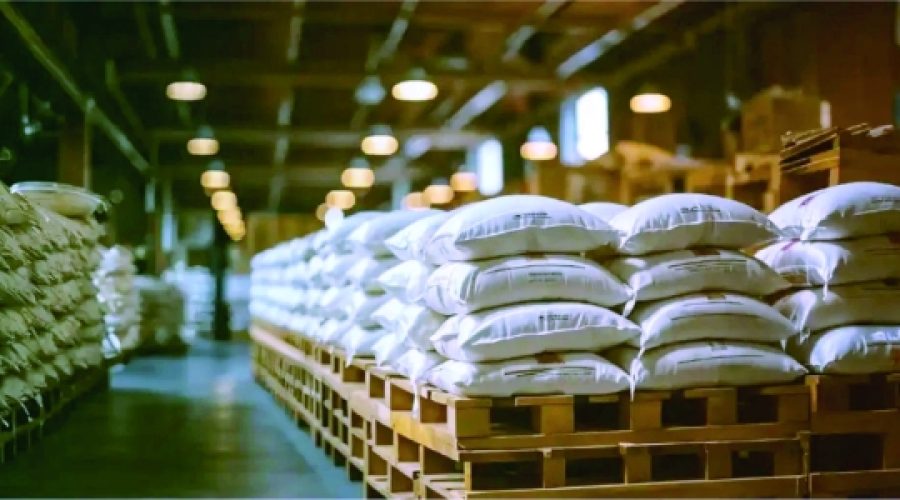مطاحن عُمان تُطوّر مشروع دقيق الحشرات: ما يعنيه لمستقبل الأعلاف الحيوانية وفرص الاستثمار في عُمان
مسقط، 15 أغسطس/آب - أعلنت شركة مطاحن عُمان، إحدى أكبر شركات تصنيع الأغذية في سلطنة عُمان، عن تحقيق تقدم كبير في مبادرتها الاستراتيجية للاستثمار في تربية الحشرات كمصدر بروتين مستدام لإنتاج الأعلاف الحيوانية.
ويخضع المشروع، الذي أُعلن عنه لأول مرة قبل ثلاث سنوات، حالياً لمرحلة التقييم الأولية، وفقاً لتقرير مجلس إدارة OFM للنصف الأول من عام 2025، والذي ينتهي في 30 يونيو.
صرح أحمد بن علي بن سليمان البلوشي، رئيس مجلس الإدارة، قائلاً: "تم الانتهاء من دراسة جدوى مكتبية لمنشأة تصنيع علف الحشرات. يهدف المشروع إلى إنتاج بروتين بديل من المخلفات العضوية ومخلفات الدواجن لاستخدامه في أعلاف الحيوانات".
يوفر دقيق الحشرات محتوى بروتينيًا يتراوح بين 40 و70%، حسب النوع وطريقة المعالجة. وهو غني بالأحماض الأمينية الأساسية والدهون المفيدة والفيتامينات والمعادن. وكخيار علفي مستدام، تستخدم تربية الحشرات النفايات العضوية، مما يقلل بشكل كبير من استخدام مكبات النفايات وانبعاثات غازات الاحتباس الحراري. كما يتطلب كميات أقل بكثير من الأرض والمياه والأعلاف مقارنةً بالثروة الحيوانية التقليدية. وبفضل دورات النمو السريعة والتوافق مع نماذج الاقتصاد الدائري والزراعة منخفضة الكربون، يُمثل دقيق الحشرات مصدرًا فعالًا وصديقًا للبيئة للبروتين.
في وقت سابق، وخلال جولة ترويجية للاستثمار استضافتها بورصة مسقط، كشف مسؤولو OFM عن خطط لدراسة استزراع يرقات ذبابة الجندي الأسود (BSFL)، وهي المكوّن الأكثر استخدامًا في إنتاج دقيق الحشرات عالميًا. تحتوي يرقات ذبابة الجندي الأسود على ما يصل إلى 50% من البروتين الخام، وما يصل إلى 35% من الدهون، ومحتوى أحماض أمينية يُضاهي مسحوق السمك. يُستخدم هذا النوع عادةً كمصدر بديل للبروتين في أعلاف الدواجن والأحياء المائية وغيرها من أعلاف الماشية.
تُشكّل مبيعات الأعلاف حوالي نصف إجمالي إيرادات شركة OFM، الشركة الرائدة في إنتاج الأعلاف الحيوانية في سلطنة عُمان. وقد بلغت إيرادات قسم مصانع الأعلاف حوالي 36.20 مليون ريال عُماني في النصف الأول من عام 2025، مُمثلةً 50.8% من إجمالي إيرادات الشركة خلال هذه الفترة.
من المتوقع أن يتجاوز سوق بروتين الحشرات العالمي $4-5 مليار بحلول عام 2030، مدفوعًا بالطلب المتزايد على البروتين وتحديات الاستدامة التي تؤثر على إنتاج دقيق السمك وفول الصويا.
يُعد مشروع دقيق الحشرات هذا من بين عدة مبادرات جديدة تدرسها شركة OFM. ومن بين هذه المشاريع إنشاء منشأة لتصنيع رقائق صحية، تعمل في البداية على نطاق محدود داخل منشآت قائمة، قبل الانتقال إلى مجمع غذائي متخصص. ومن المتوقع اتخاذ قرار الاستثمار بحلول الربع الأخير من عام 2025، على أن يبدأ الإنتاج بعد حوالي 10 أشهر من شراء المعدات وتركيبها.
بالإضافة إلى ذلك، تستكشف OFM الفرص المتاحة في قطاع الأغذية الوظيفية، مع التركيز على المنتجات الغذائية عالية القيمة التي تتوافق مع اتجاهات الصحة والعافية العالمية.
وتقوم الشركة أيضًا بمراجعة خطط مشروع تصنيع أغذية الأطفال في أوزبكستان، حيث استكملت دراسة الجدوى الأولية للاستفادة من الطلب المتزايد في آسيا الوسطى.
تعد شركة عمان للاستثمار الغذائي القابضة (نيتاج) مملوكة جزئيًا للدولة وتحت إشراف الشركة العمانية للاستثمار الغذائي القابضة (نيتاج)، وتغطي عمليات الشركة طحن الدقيق، ومنتجات المخابز والحلويات، ومنتجات الألبان، والدواجن، واللحوم، وأعلاف الحيوانات، وخدمات المختبرات.
خلال الأشهر الستة المنتهية في 30 يونيو 2025، حققت مجموعة OFM إيرادات بلغت 67.8 مليون ريال عُماني، بزيادة قدرها 3.2% على أساس سنوي، مدفوعةً بالطلب المستمر. وارتفع إجمالي الربح بنسبة 13.5% ليصل إلى 14.8 مليون ريال عُماني، مع تحسن هامش الربح الإجمالي من 19.9% إلى 21.9%، مما يعكس تحسين كفاءة تكاليف الإنتاج. كما ارتفع صافي الربح بعد الضريبة بنسبة 22.4% ليصل إلى 4.32 مليون ريال عُماني.
تحليل خاص من عمانت | تصفح سوق عُمان
تشير خطوة شركة مطاحن الدقيق العمانية نحو إنتاج بروتين الحشرات إلى التحول الاستراتيجي نحو الأعلاف الحيوانية المستدامة والصديقة للبيئة، مما يفتح فرصًا جديدة في سوق عالمية سريعة النمو ومن المتوقع أن يتجاوز حجمها $4-5 مليار دولار أمريكي بحلول عام 2030. بالنسبة للشركات في عُمان، فإن هذا الابتكار يقلل الاعتماد على مصادر الأعلاف التقليدية مثل دقيق السمك وفول الصويافي حين ينبغي للمستثمرين ورجال الأعمال الأذكياء أن يأخذوا في الاعتبار إمكانات نماذج الاقتصاد الدائري وقطاعات الأغذية الوظيفية الناشئة باعتبارها مجالات نمو حاسمة في السنوات القادمة.



